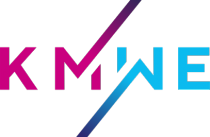Global Technical Insulation Market is Projected to Grow from USD 7.6 Billion in 2019 to USD 9.2 Billion by 2024 with a CAGR of 4.0% - ResearchAndMarkets.com
The "Technical Insulation Market by Product Type (Flexible, Rigid, MMF), Application (Heating & Plumbing, HVAC, Refrigeration, Industrial Process, Acoustic), End-use (Industrial & OEM, Energy, Transportation, Commercial), and Region - Global Forecast to 2024" report has been added to ResearchAndMarkets.com's offering.
The technical insulation market is projected to grow from USD 7.6 billion in 2019 to USD 9.2 billion by 2024, at a CAGR of 4.0% between 2019 and 2024.
The technical insulation market is projected to register a CAGR of 4.0%, in terms of value, between 2019 and 2024.
The major driving factors in the technical insulation market are the presence of stringent regulations regarding the insulation of equipment and pipes and growing demand in the oil & gas sector.
However, volatile raw material prices are expected to restrain the growth of the market. The growing opportunities from emerging economies will bring new growth opportunities for this market. Corrosion under insulation leading to health and safety-related incidents is a challenge expected to be faced by this market during the forecast period.
The man-made mineral fibers segment is expected to grow at the highest CAGR during the forecast period.
Man-made mineral fiber can be divided into stone wool, fiberglass, cellular glass, calcium silicate, microporous insulation, aerogel, and vacuum insulated panels. This segment is projected to register the highest CAGR, in terms of value, between 2019 and 2024. This is because it is used in high-temperature applications in power, oil & gas, and other industries. Exceptional temperature sustainability, recyclability, long term stability, and availability in different forms, such as boards, pipes, foams, and blankets result in the extensive usage of these materials in diverse end-use industries, which has subsequently led to a stable rise in the use of man-made mineral fiber in the technical insulation market.
Industrial & OEM segment is expected to be the largest and fastest-growing end-use industry during the forecast period
The industrial & OEM end-use industry dominated the technical insulation market in 2018. The huge industrial base and necessity to insulate industrial plants are expected to drive this demand in the global marketplace. In industrial pipelines, high compressive strength insulation is used to maintain nominal thickness during and after installation of the insulation. Low thermal conductivity, low water absorption, effective noise reduction, and corrosion resistance are the other properties of insulation materials required for industrial insulation. These factors are expected to drive the demand for technical insulation in the industrial segment.
APAC is expected to be the largest region in the technical insulation market during the forecast period.
APAC was the largest market for technical insulation in the industrial application in 2018. The large market size in the region is attributed to the growth of the manufacturing and mining industries in the region. Major manufacturing companies are shifting their base from Europe and North America to APAC due to low labor and raw-material costs.
Research Coverage:
This report provides detailed segmentation of the technical insulation market based on product type, application, end-use industry, and region. Product type is divided into flexible foams, rigid foams, and man-made mineral fibers. Based on the application, the technical insulation market has been segmented into heating & plumbing, HVAC, refrigeration, industrial processes, and acoustic. Based on the end-use industry, the market has been segmented into industrial & OEM, energy, transportation, and commercial buildings. Based on the region, the market has been segmented into North America, Europe, APAC, the Middle East & Africa, and South America.
Key Benefits of Buying the Report
From an insight perspective, this research report focuses on various levels of analyses - industry analysis (industry trends), market share ranking of top players, and company profiles, which together comprise and discuss the basic views on the competitive landscape; emerging and high-growth segments of the market; high growth regions; and market drivers, restraints, opportunities, and challenges.
Key Topics Covered:
1 Introduction
1.1 Objectives of the Study
1.2 Market Definition
1.3 Market Scope
1.4 Currency
1.5 Stakeholders
2 Research Methodology
2.1 Research Data
2.2 Market Size Estimation
2.3 Data Triangulation
2.4 Assumptions
2.5 Limitations
3 Executive Summary
4 Premium Insights
4.1 Attractive Opportunities in the Technical Insulation Market
4.2 Technical Insulation Market, By Material Type
4.3 Technical Insulation Market, By Application and Key Countries
4.4 Technical Insulation Market, By End-Use Industry
4.5 Technical Insulation Market, Developed vs. Developing Countries
4.6 APAC: Technical Insulation Market
4.7 Technical Insulation Market: Major Countries
5 Market Overview
5.1 Introduction
5.2 Market Dynamics
5.3 Porter's Five Forces Analysis
5.4 Macroeconomic Analysis
6 Technical Insulation Market, By Material Type
6.1 Introduction
6.2 Hot Insulation
6.3 Cold-Flexible Insulation
6.4 Cold-Rigid Insulation
7 Technical Insulation Market, By Application
7.1 Introduction
7.2 Industrial Processes
7.3 Heating & Plumbing
7.4 HVAC
7.5 Acoustic
7.6 Refrigeration
8 Technical Insulation Market, By End-Use Industry
8.1 Introduction
8.2 Industrial & Oem
8.3 Energy
8.4 Transportation
8.5 Commercial Buildings
9 Technical Insulation Market, By Region
9.1 Introduction
9.2 Europe
9.3 APAC
9.4 North America
9.5 Middle East & Africa
9.6 South America
10 Competitive Landscape
10.1 Introduction
10.2 Competitive Leadership Mapping
10.3 Strength of Product Portfolio
10.4 Business Strategy Excellence
10.5 Market Ranking Analysis
10.6 Competitive Scenario
11 Company Profiles
11.1 Rockwool International A/S
11.2 Saint-Gobain Isover
11.3 Owens Corning
11.4 Knauf Insulation
11.5 Kingspan Group PLC
11.6 Armacell International S.A.
11.7 L'isolante K-Flex S.P.A.
11.8 Morgan Advanced Materials PLC
11.9 Etex Group Sa
11.10 Aspen Aerogels, Inc.
11.11 Zotefoams PLC
11.12 Johns Manville
11.13 Recticel Nv/SA
11.14 NMC SA
11.15 Palziv Inc.
11.16 Unifrax I LLC
11.17 Durkee (Wuhan) Insulation Material Co., Ltd.
11.18 Huamei Energy-Saving Technology Group Co., Ltd.
11.19 Wincell Insulation Material Co., Ltd
11.20 Interep Sas
For more information about this report visit https://www.researchandmarkets.com/r/tmnius
View source version on businesswire.com: https://www.businesswire.com/news/home/20200122005648/en/





